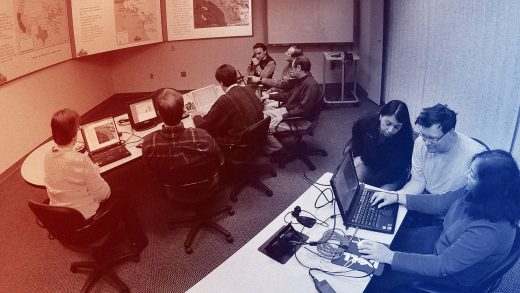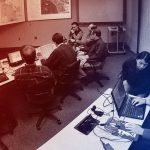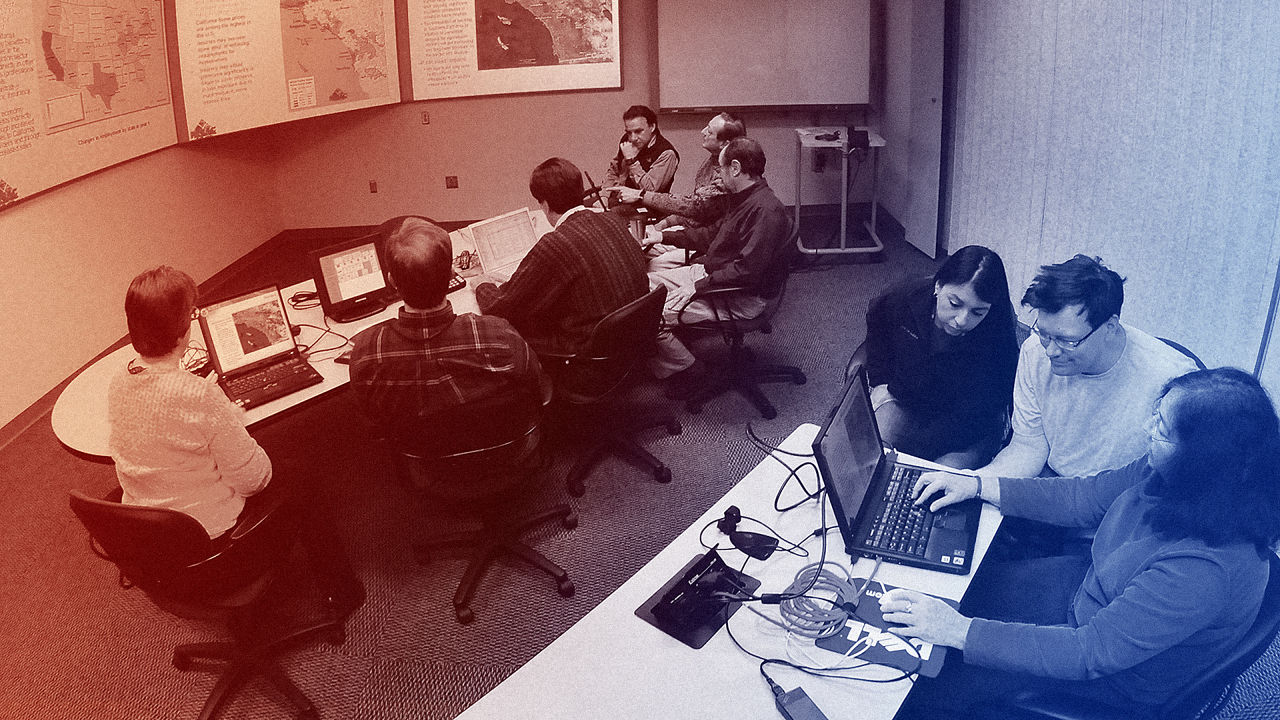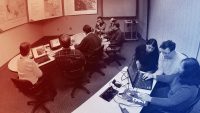The Scientists Who Simulate The End Of The World
September 11 transformed the global economy, the way wars are fought, and how the United States keep tabs on citizens. But it also revealed just how complex our world had quickly become in the years leading up to the attack. So complex, in fact, that in the months that followed, the government mandated a project to understand it.
The National Infrastructure Simulation and Analysis Center, or NISAC, was officially founded in 1999 as a collaboration between two national laboratories, Sandia and Los Alamos, managed by the Department of Energy. Three years later, NISAC’s mission—to model the behavior of fuel supply lines, the electrical grid, food supply chains, and other national infrastructure—was suddenly a matter of critical national import. “It was really 9/11 that focused the country’s attention on the vulnerability of domestic infrastructure,” says Lori Parrott, program manager at NISAC. Being able to simulate how an attack or disaster would affect those systems was no longer a rhetorical exercise, it was a reality.

That fall, Congress sent the project an influx of federal money and mandated it to become part of the Department of Homeland Security as part of the PATRIOT Act. Its role? To study the consequences of “disruptions” to infrastructure. What would it cost? How many lives might be lost? And crucially, how would the government respond?
Or, as Parrott puts it, NISAC would be “a national center for building what I would call a new discipline.”

Modeling Chaos To Prevent It
The models that NISAC produces are not necessarily visually beautiful, but they are mathematically extraordinary. A map of an influenza pandemic spreading across the U.S. An flow chart of chemical supply chains in the Midwest. A diagram of how fear will influence human behavior in cities after a disaster. They’re ruthlessly utilitarian documents, created from NISAC’s advanced simulations of the systems that underpin our world—and what happens when they break.
What Parrott describes as a “new discipline” is often called CASoS: Complex Adaptive Systems of Systems. That’s not a typo: systems of systems.
To understand what that means, it helps to know a little about the organization that houses NISAC. Sandia National Labs was founded in Albuquerque, New Mexico, in the years after World War II. Originally established as part of the nuclear program, Sandia was eventually mandated to secure and maintain the U.S. nuclear arsenal in the 1960s. Along with its partner, Los Alamos, it developed some of the earliest computers during those years to handle complex simulations involved with the nuclear program.
As early computers increased in processing power, scientists took advantage of the newfound ability to model data-heavy dynamic systems. In the ‘60s, a physicist named Edward Lorentz used computer modeling to pioneer a totally new concept—chaos theory—by simulating the way weather moves around the globe. These ideas about modeling complex systems and randomness were groundbreaking for a huge range of disciplines over the next three decades, from biology to astronomy to artificial intelligence, as historian James Gleick describes in Chaos: Making A New Science. It was a potent concept in pop culture, too—after all, it spawned its own Ashton Kutcher thriller in 2004, The Butterfly Effect.
CASoS takes all of those ideas and applies them to real-world problems as they happen. Using today’s computational firepower, CASoS engineering simulates not only billions of actors and systems, but how those systems interact on a global scale, and how they might adapt based on dynamic changes across the ecosystem.
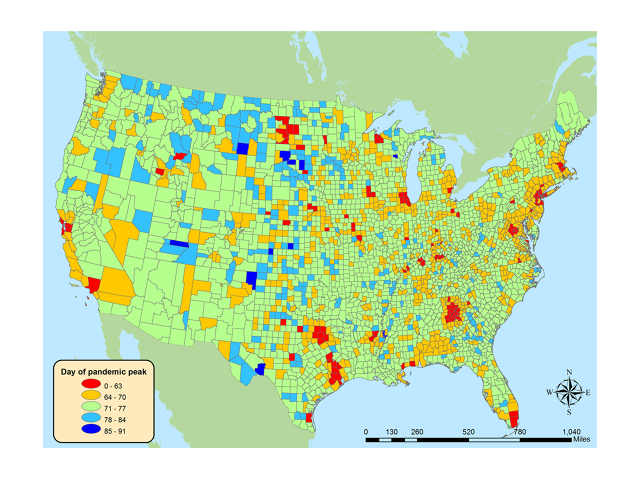
The Pandemic And The Forest Fire
A paper about pandemics from a former Sandia scientist named Robert J. Glass offers a visceral example of what that really means. In 2005, at the height of the avian flu crisis, the Department of Homeland Security asked NISAC to put together a simulation of how the flu could escalate into a global pandemic for an exercise. It was the perfect CASoS: It involved everyone on Earth, all of their social networks, and all of the complex economic, cultural, and geographic systems that connect them. “What could we do to avert disaster?” Glass writes.
Glass noticed something about the behavior of a pandemic. It “exhibits many similarities to that of a forest fire: You catch it from your neighbors,” he reasoned. And there are two ways to stop a wildfire from spreading—with fire breaks or by thinning the forest. In pandemic terms, that meant either closing off borders in large quarantine areas, or “thinning” the potential network of people who could be infected. The thinning model, Glass posited, would work a lot better since the place where the fire (or flu) will break out is so unpredictable.
By envisioning a community as a complex system of nodes and using network dynamics to simulate their interaction, he developed a model showing how teens and children would be the biggest transmitters during an outbreak. High schoolers, the paper explained, “may form the local transmission backbone of the next pandemic.” Thinning out the thickets of infected school-aged kids could prevent the pandemic from spreading.
So, out of a complex simulation came a simple recommendation: The most effective way to stopping a pandemic may be closing schools, not borders.

Not Everything’s An Armageddon
In the years since it was incorporated by the Department of Homeland Security by Congress, NISAC has assembled a multidisciplinary team of physicists, geologists, data and environmental scientists, computer programmers, and more, all to try to comprehend the marvelous, terrifying complexity that touches every aspect of our daily lives.
“There’s no real place in the government where all of that comes together, looking across all of the infrastructures against all of the hazards,” says Theresa Brown, a hydrogeologist whose background in modeling led her to NISAC, where she is now technical program lead. “When you talk about the applied piece of this—to really apply it to systems and decision making, that’s fairly nascent.”
For the federal government, there’s a critical need to predict how these adaptive systems will react and evolve during a disruption. If an earthquake hits the Midwest, how will the fuel supply chain affect cities like Chicago and Detroit? If the Cascadia subduction zone experiences a quake-induced tsunami, which airports will survive? If a superstorm descends upon Manhattan, how long will it take to run out of food?
Some of these questions go even deeper into mathematically modeling human behavior during a crisis. In one 2009 paper, NISAC analyzed how fear will affect cities in the days after an attack or pandemic. “The impacts to food demand caused by household stress, fear, hoarding, and observing others doing the same could be far greater than those caused simply by the disease itself,” conclude the three authors.
But we live in a world of crises: most of them imagined, or at least exaggerated. So how do the scientists at NISAC choose which to study? “What we do is a very collaborative partnership,” Parrott explains. Every year, they create a program with the Department of Homeland Security that lays out the topics it might study. “We start talking about issues we’re seeing: Is there citrus greening in Florida? Are there more concerns about cyberattacks on financial institutions?”
Sometimes, an issue will take years to address because NISAC’s engineers have to actually develop the tools to model it. Other times, it will take just a few weeks to develop a working paper, using GIS and other modeling tools. Either way, the goal is to create a document that other government agencies can use in a crisis. “If there’s some national incident, they have a relatively recent report already on the shelf,” Parrott says.
Hurricanes have offered fertile ground for the group to test and refine its approach. During the busy 2005 season, the Department of Homeland Security started asking NISAC for briefs on how every hurricane landfall scenario would affect citizens. Hurricane Katrina also exposed flaws—like the inability of its economists to quickly create analyses for how the storm would impact the regional economy. Now, NISAC has a model for that. “What took 30 economists hours to produce by hand during Katrina can now be completed in minutes,” it writes.
In 2012, NISAC’s more sophisticated modeling techniques got a major test during Hurricane Sandy. As the storm bore down on the East Coast, the Office of Cyber and Infrastructure Analysis was in constant contact with the lab, asking for analysis of storm scenarios based on their models. Where would the critical fuel shortages take place? Where is it still available? And what about the food supply? Should restoring fuel supplies to certain areas be prioritized to prevent food shortages? While other agencies could model one area of infrastructure disruption, NISAC could put all of those models together to see how they interacted. As NISAC’s Dan Pless recalled in a news release later:
“You had this massive power outage and they were wondering, ‘Okay, we have these cell towers and a lot of them have diesel generators for backup. Those last 48 to 72 hours and the power isn’t coming back in 48 to 72 hours. How do we prioritize that? Few of the gas stations have fuel, what’s going on? Is it that they don’t have power or because eight of the nine fuel delivery terminals in New Jersey were down?’”
The lab does at least two major hurricane studies every year now, because the computational tools available to them improve—and because infrastructure itself is always changing. “By doing a new analysis, we adjust our capabilities,” Parrott says, “but we also update our understanding of what’s going on in chemical supply chains in South Carolina, for example.”
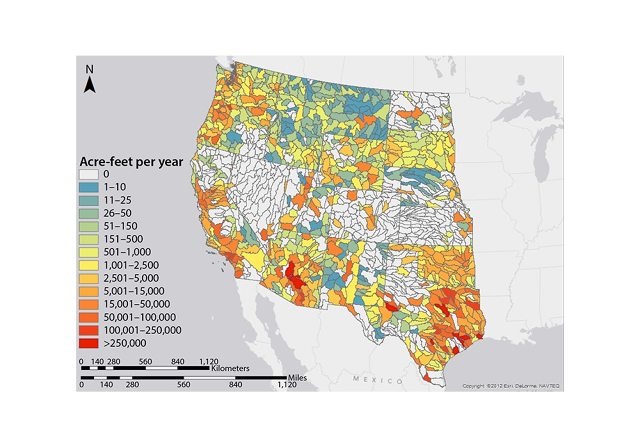
Simulating How Humans Survive
Over the coming decades, as climate change throws even more chaos into our daily lives, NISAC’s science could begin to shape more than just disaster contingencies.
This spring, Sandia’s resiliency arm finished an analysis for Norfolk, Virginia, looking at how extreme flooding could affect the city (and its naval bases) based on NISAC work. The project produced a framework called the Urban Resilience Analysis Process that other cities around the world could use to simulate disasters and predict how they will affect everything from electricity outages to economic impact. “City planners don’t have time to learn the sophisticated mathematical models in the tool,” said Eric Vugrin, a manager of the program, in a news release. Sandia wants to give those tools to cities to use on their own.
In some ways, climate change poses the penultimate problem for the nascent field of complex adaptive systems engineering. Unlike a hurricane or earthquake, climate change’s effects stretch over decades—or even centuries, in the case of drought and sea level rise. “That’s the challenge for us now,” Brown says, “thinking about that coevolution of the environment and the systems within these coastal regions.”
NISAC deals in catastrophe, but it would be wrong to say it’s pessimistic by design. In fact, as Brown explains, a big part of the job is explaining why a certain scenario won’t be a crisis. “There are a lot of Armageddon scenarios out there,” Brown laughs.
In many cases, NISAC’s job is to show why the government shouldn’t be concerned about a particular disruption. Adaptation isn’t always negative; in fact, humans are remarkably good at surviving. Modeling how humans will respond to crises is its own scientific challenge—and one that’s important for NISAC.
“We are pretty resourceful as people,” Brown says. “Taking that into account, and thinking about how you facilitate that so you’re actually increasing the probability of success? That’s where our real value is, I think.”
All Images: via NISAC
Fast Company , Read Full Story
(46)

